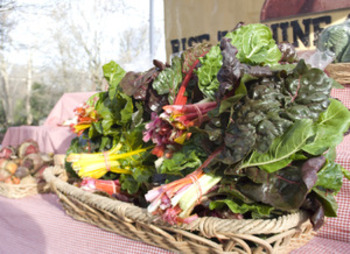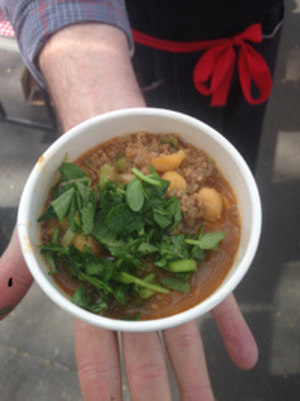Delicata squash is considered a winter squash because of its texture, taste and growth patterns however it belongs to the same species as the summer squash like pattypan, zucchini and yellow crookneck squash. It takes the farmer roughly 100 days from planting the seed to harvest and then about one week to cure. Right now is the time to get them from our farmers at Freedom Farmers Market. I do consider this a long storage squash but they don’t store quite as well as true winter squash like butternut or acorn squash and more than likely after you taste one of these sweet things they wont last long at your house at all!
Delicata squash can be baked, sautéed, stuffed or steamed, can be eaten as a side, as the main course, or as dessert.
Check out this recipe, I absolutely love making it for dinner!
Ingredients
• 2 medium to large Delicata squashes, halved and seeds removed (it can be hard to cut them evenly so take your time)
• 4 tablespoons extra virgin olive oil
• Kosher salt and freshly ground black pepper
• 2 medium apples, peeled, cored and finely chopped (you can also use 6 small Gala apples from Moore Farms and Friends)
• 2 medium leeks white and light green parts only, cleaned of grit, split in half lengthwise, and sliced into 1/4-inch half moons (remember you can always substitute this for any of your favorite type of onion)
• 2 medium cloves garlic, minced (about 2 teaspoons)
• 1/2 cup raisins
• 1 teaspoon dried thyme
• 1 bunch kale, rinsed, thick stems removed, shredded (about 2 loosely packed quarts) I sometimes use swiss chard or whatever greens are in season.
• 1 cup cottage cheese, goat cheese will also do very nicely
• 2 eggs
• 3/4 cup packaged or fresh unseasoned breadcrumbs, plus more for topping
• 1/2 cup grated Parmesan cheese, plus more for topping
• 1 tablespoon unsalted butter, cut into 8 small cubes
Directions
1. Adjust oven rack to middle position and preheat oven to 375°F. Halve squash, cutting from pole to pole. Remove seeds with a spoon. Rub with 1 tablespoon oil and lightly season with salt and pepper, then lay on a baking sheet.
2. If squash halves do not sit flat on baking sheet, use a vegetable peeler to trim a strip or two away from the bottom to allow them to lie flat. Bake until flesh is starting to turn tender, about 25 minutes.
3. Meanwhile, prepare the stuffing. Heat remaining olive oil in a large, heavy-bottomed skillet over medium-high heat until shimmering. Add the apples and leeks and cook, stirring occasionally, until lightly browned, about 10 minutes. Stir in the garlic, raisins and thyme. Cook, stirring occasionally, until fragrant, 1 to 2 minutes.
4. Reduce heat to medium, add kale or greens of choice, cover pan and cook, stirring occasionally, until greens are mostly wilted, 5 to 7 minutes. Transfer mixture to a large bowl and let cool slightly. Season to taste with salt and pepper.Add cottage cheese, eggs, breadcrumbs and Parmesan. Mix well.
5. Remove squash from oven and divide filling evenly among 4 halves. Sprinkle squash with additional breadcrumbs and Parmesan, and dot each squash half with 2 cubes of butter. Return to oven and bake until squash is tender and stuffing is nicely browned, about 30 more minutes.
6. If you have any leftover stuffing, bake it in a greased dish alongside for the during the last 30 minutes.
SERVE and ENJOY!












